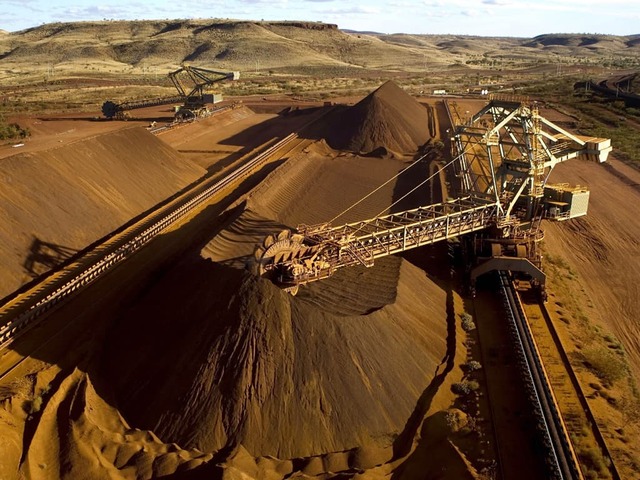
© Reuters. FILE PHOTO: The logo of commodities trader Glencore is pictured in front of the company’s headquarters in Baar, Switzerland, July 18, 2017. REUTERS/Arnd Wiegmann/File Photo
Copper
+0.92%
Add to/Remove from Watchlist
Add to Watchlist
Add Position
Position added successfully to:
Please name your holdings portfolio
Type:
BUY
SELL
Date:
Amount:
Price
Point Value:
Leverage:
1:1
1:10
1:25
1:50
1:100
1:200
1:400
1:500
1:1000
Commission:
Create New Watchlist
Create
Create a new holdings portfolio
Add
Create
+ Add another position
Close
GLNCY
-2.44%
Add to/Remove from Watchlist
Add to Watchlist
Add Position
Position added successfully to:
Please name your holdings portfolio
Type:
BUY
SELL
Date:
Amount:
Price
Point Value:
Leverage:
1:1
1:10
1:25
1:50
1:100
1:200
1:400
1:500
1:1000
Commission:
Create New Watchlist
Create
Create a new holdings portfolio
Add
Create
+ Add another position
Close
By Clara Denina and Helen Reid
LONDON (Reuters) -London-listed Glencore (OTC:GLNCY) cut 2023 production guidance across all the commodities it mines, missing consensus estimates and sending its shares sharply lower on Tuesday.
The miner and trader expects to produce 1.04 million tonnes of copper next year, down from 1.06 million this year and much lower than analysts’ consensus forecast of 1.124 million tonnes.
“Higher costs, higher capex and lower production were all expected by the market,” Tyler Broda at RBC Capital Markets said. “But the numbers have come in behind our below-consensus forecasts and … will materially reduce consensus free cash flow estimates.”
The company sees 2023 earnings before interest, tax, depreciation and amortisation (EBITDA) at $28.7 billion and free cash flow at $14.7 billion. RBC had forecast EBITDA at $31.8 billion and free cash flow at $20 billion.
Capital expenditure at Glencore’s industrial assets is expected to average $5.6 billion per annum between 2023 and 2025.
Glencore’s shares, which have gained 50% so far this year, fell 3.5% but had recovered by 1637 GMT to trade 1.3% lower.
Copper production at Glencore’s Katanga mine in the Democratic Republic of Congo was affected by issues including grid power instability, higher volumes of acid-consuming ore and incursions by artisanal miners.
Roughly 20% of Glencore’s copper comes from Katanga.
“It’s been a challenging year at Katanga, and disappointing in terms of output,” said Peter Freyberg, Glencore’s head of industrial assets at the company’s annual investor day.
Glencore also mines and trades nickel, zinc, cobalt, coal and ferrochrome.
Profit from its trading division, which reached a record $3.7 billion in the first half, well above a long-term annual outlook between $2.2 billion and $3.2 billion, is expected to total $5.3 billion in 2022, partly boosted by higher prices due to shortages during COVID lockdowns and the war in Ukraine.
Glencore expects adjusted EBITDA for the trading business at $3.1 billion in 2023.
Glencore’s shareholders reaped an $8.5 billion windfall for 2022, but the prospect of a global recession and doubts about demand in China, the world’s biggest user of raw materials, could affect future earnings and investor returns.
EYES ON M&A
The miner also raised its short-term net debt projection to up to $16 billion, the top end of its target range, for mergers and acquisitions (M&A).
“(M&A) will certainly be focused on future-facing minerals and metals,” Chief Executive Gary Nagle told investors.
“It will be in copper, it’ll be in nickel, it’ll be in zinc, it’ll be in cobalt, and probably in aluminium – the key minerals and metals for the decarbonisation drive of the world.”
M&A focus will be on commodities that are strategic for Glencore – “whether it be because we have an existing shareholding, existing partnerships … and not simple highest-bid-wins,” Nagle said.
Glencore, which has in the past year sold more than 20 non-core assets, owns around 150 operating sites.
Nagle said Glencore had not made provision for any other settlements with governments after agreeing to pay $180 million to the Democratic Republic of Congo to settle present and future claims “arising from any alleged acts of corruption” by it in the country between 2007 and 2018.
The company this year pleaded guilty in Brazil, Britain and the United States to allegations of bribery and market manipulation at some of its subsidiaries, for which it was fined a combined $1.45 billion.
Source: Investing.com







![[Geojit Comtrade] Daily report on Natural Rubber: December 4, 2012](https://globalrubbermarkets.com/wp-content/uploads/2024/08/geojit-comtrade-daily-report-on-natural-rubber-december-4-2012.jpg)













